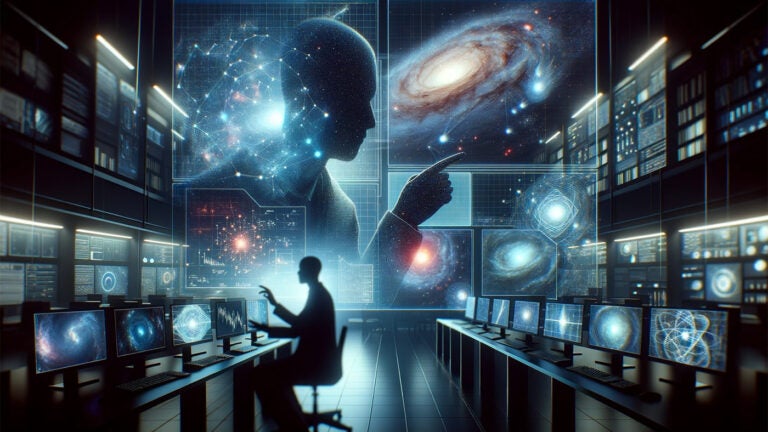
Unlocking the mysteries of dark matter — a fresh perspective
Delving deep into the enigmatic world of dark matter, physics and astronomy Ph.D. student Adam He, in collaboration with his advisor Vera Gluscevic, Gabilan Assistant Professor of Physics and Astronomy at the USC Dornsife College of Letters, Arts and Sciences, engages in research that could reshape our understanding of the universe.
Traditionally, dark matter, which constitutes about 85% of all matter, is believed to interact with regular matter solely through gravitational forces. However, He explores an intriguing idea: What if a fraction of dark matter particles could “collide” with regular matter, much like billiard balls?
This hypothesis is driven by observed inconsistencies in the distribution of matter across the universe. Some areas appear more “clumpy” while others are more evenly spread. Current models struggle to account for these variations. He’s research suggests that if 5 to 15% of dark matter particles could interact in this manner with regular matter, it might bridge these discrepancies, aligning the observed “clumpiness” more closely with theoretical predictions.
Significance and the road ahead
The potential ramifications of He’s research findings, which were recently featured in the American Astronomical Society’s NOVA, are vast. If dark matter can interact with regular matter beyond just gravitational forces, it could revolutionize our comprehension of the universe’s structure and evolution. This pioneering work not only emphasizes the importance of continued exploration in the field but also challenges long-standing tenets of cosmology.